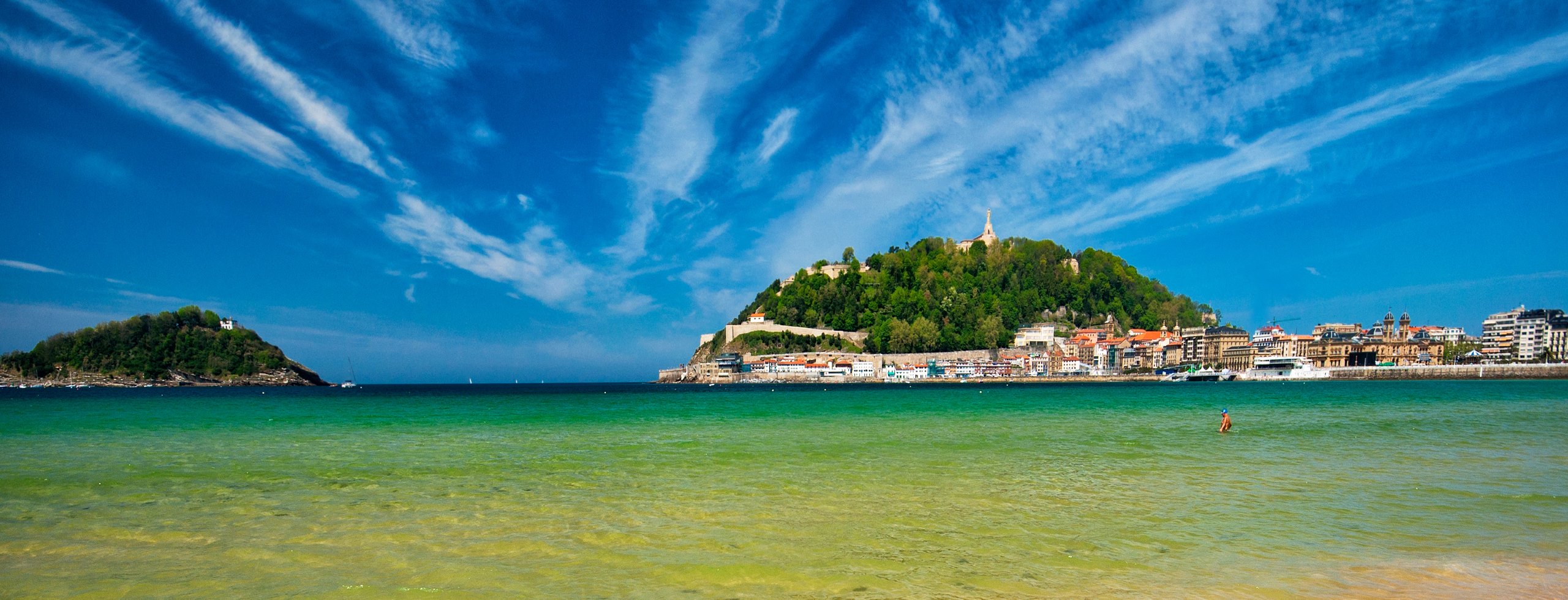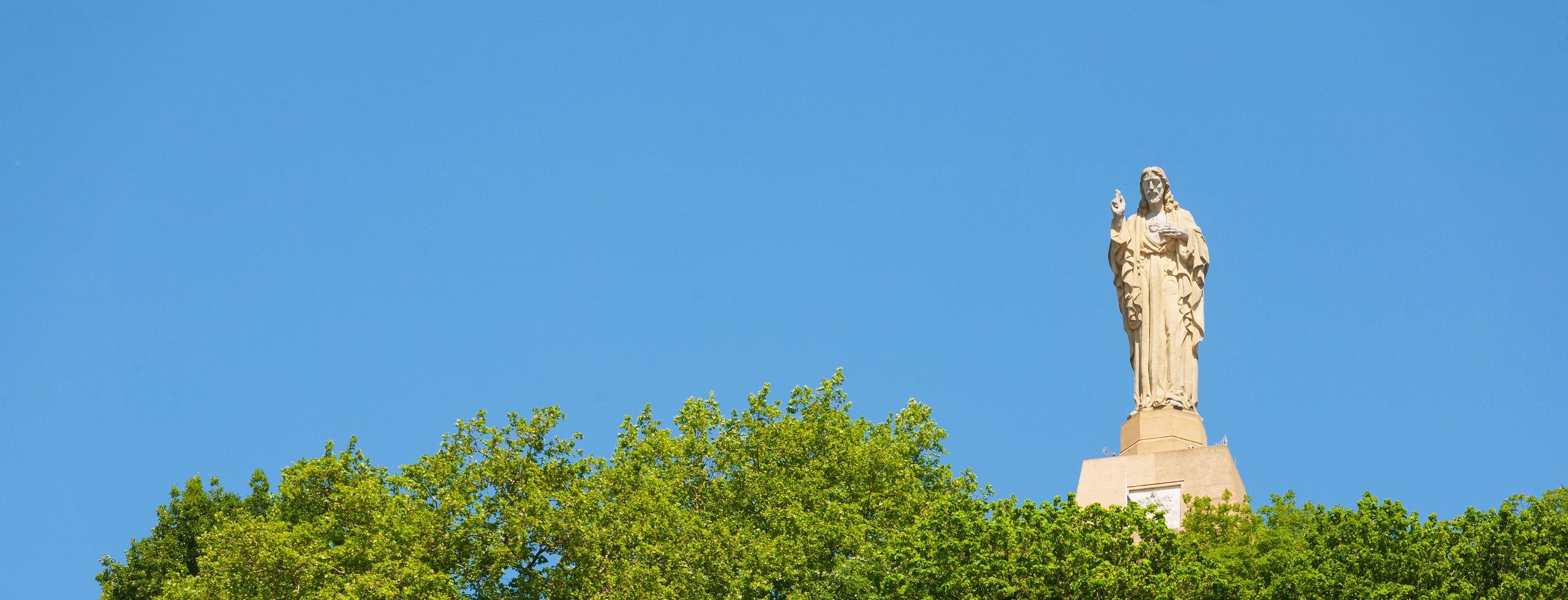Situated on the coast of the Bay of Biscay at the mouth of the Urumea River, San Sebastian grew from what were once the wetlands of the river’s estuary. As the population and construction expanded during the first half of the 20th century, the river was diverted into the canal that now runs through the city. Today the population of San Sebastian is approximately 186,000 and it is a city that is divided into a number of interesting and charming neighborhoods.
Route 1: San Sebastian
Situated on the Bay of Biscay, San Sebastian, or Donostia as it is know in the Basque language, is one of the oldest beach resorts in Europe. Fashionable yet not exclusive, it is also known for its many cultural events, pinxto bars and fine restaurants. As a city that began to flourish in the Middle Ages, it has its share of historic buildings, including its cathedral and Basilica of Saint Mary of the Chorus, as well as newer additions like the Kursaal Congress Centre and Auditorium that is a center for conferences, sporting and cultural events. From late May to early October, what draws visitors to San Sebastian are its beaches. Located right in the city, San Sebastian offers some of the finest sandy public beaches on Europe’s Atlantic coast.
The great curved Playa de la Concha, located on its own picturesque bay, and its extension of the Playa de Ondaretta, are recommended for sunbathers and swimmers, while nearby Playa de Gros, also known as Playa de Zurriola, is popular for surfing. For many, these beaches – combined with some of the best food to be had in Spain – justify and satisfy a visit to San Sebastian. There is also an aquarium with a spectacular underwater tunnel, and nearby hills that offer great views of the bay. If you are a fan of cultural events, then you may like to enjoy the San Sebastian International Film Festival, which takes place in mid-September, and the San Sebastian International Jazz Festival, called Jazzaldia, which takes place during the second half of July. For those who prefer classical music, the Musical Fortnight follows the jazz festival from late July to early September.
There is also a Horror and Fantasy Film Festival that takes place in late October, and the Surfilm Festival that takes place in June. In mid-August there is the Semana Grande (or ‘the big week’ in English) with a daily parade of giants and large heads, while in the evenings there is an international fireworks contest. In early September there is the Basque Week, with traditional Basque contests and cultural events. No matter when you visit San Sebastian, it is a city of culture and leisure that you will surely enjoy!
Known by locals by its Basque name of Donostia, San Sebastian was actually the site of a human settlement as early as 24,000 BC. Nothing is known of its subsequent history until the Romans refer to the region as home of the Varduli tribe. It is assumed that the Basque people with their distinctive language and customs had long settled here and prevailed over all newcomers. San Sebastian then again essentially vanishes from history until the 12th century AD when King Sancho VI of nearby Pamplona granted it a charter. During the next several hundred years, the city was passed around among various Spanish kingdoms and because of its location often became involved in the wars between Spain and France – this culminated in 1808 when Napoleon took over. In 1813, British and Portuguese troops won over the French, but left the city devastated; the city seen today is largely the one that was built up after 1813. In the second half of the 19th century the city’s future as a summer resort was established when the Spanish royal family, wanting to escape the heat of Madrid, chose to spend their summers here. As was to be expected, Spanish aristocracy and the foreign diplomatic corps followed in the footsteps of the royals, and with them came a casino and cultural events that further enhanced the city’s reputation.
By the 20th century, San Sebastian attracted an international crowd including celebrities such as Leon Trotsky and Maurice Ravel, but this came to an abrupt halt when Franco’s forces took over the city in 1936. Although initially the city struggled – the Basques had been among the strongest opponents of Franco – gradually the economy began to revive, immigrants settled in, industry thrived, and construction of all kinds added to the sense of a modern city. The San Sebastian International Film Festival began in 1953, and continues today every September to enhance the city’s image as a sophisticated destination. Additionally, there is a very active musical and cultural scene – the city was selected as European Capital of Culture for 2016 – and throughout the year there are a series of festivals and holidays, many of which are specifically Basque. Last, but definitely not least, are San Sebastian’s fine sandy beaches right along the city’s shoreline. Ringed by the city’s skyline with a backdrop of impressive hills, San Sebastian’s beaches make this city a truly unique holiday destination.



 View Map
View Map 

